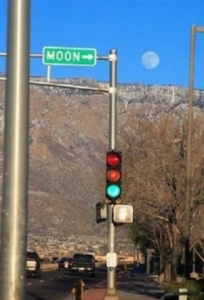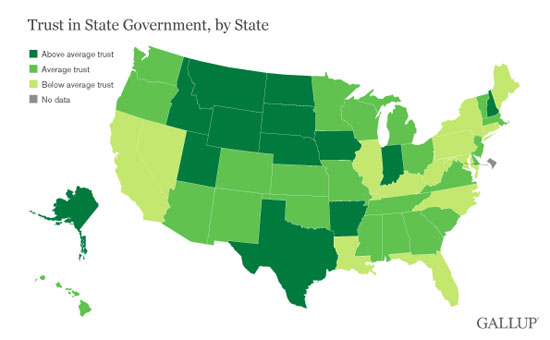Monthly Archives: April 2014
Apple booster Daniel Eran Dilger wrote a long screed about how Apple rules and Google drools. He makes some good points (it’s hard to argue with Apple’s business acumen, while Google’s is genuinely more puzzling), though relies heavily on “they all said” when, in fact, I heard nobody say that. I’m sure somebody, somewhere said that Symbian would knock Apple off its pedestal, but I was pretty late to acknowledge Symbian’s utter collapse, it seemed like pretty much everybody was saying differently, and even I wasn’t saying that Symbian was going to eat Apple’s lunch. I just thought they would survive, and I was more optimistic than most people seemed at the time.
It coincides to some extent with what has become one of the overwhelming themes of the smartphone wars. Actually, not the wars, but the wars between boosters. A huge sense of defensiveness. It hasn’t exactly been symmetrical. Early on it was much more the Android fans that were defensive and were, in retrospect, by far the more hyper participants in arguments about which ecosphere was superior. Apple fans were less defensive and mostly dismissive. Dilger rallies a degree of defensiveness in the other direction.
Ultimately, the truths seem quite clear. Apple isn’t the only game in town, or the biggest in terms of marketshare, but its business model is amazingly profitable and that’s what matters. Both to Apple, and to an extent to its fans as it gives them something to point to. To Android fans, marketshare does matter and Android’s dominance there is the most important thing. Not as a bragging point, though it’s used as that, but mostly as a solidified alternative to Apple’s extremely limited range of smartphones.
Looking back at my own animosity towards Apple, I suspect that a lot of it was rooted in the fear that there actually wouldn’t be an alternative. Especially once Microsoft made clear that it was going much closer to the iPhone route (in terms of a restricted, closed OS), I was worried that Apple’s model was so effective that the Windows Mobile model actually wouldn’t have a successor.
But Android persevered, and I’m mostly past worrying about that. Even if Android were to falter, or be displaced by Tizen or something else, it’s been demonstrated that there is a huge market for alternatives to the iPhone. That the “fractured market” isn’t prohibitive and isn’t exclusive to a sufficiently intuitive, functional device that suits my needs (a flexible power device), the needs of my wife (a device with a keyboard that’s easy to use), and the needs of my family (a sufficient, inexpensive device).
If Google quits, someone else will step up. I am free to have device preferences that Apple doesn’t want to deliver on. Which, ultimately, is the primary problem I ever had with them. It wasn’t that their devices weren’t good. It was simply that they weren’t what I wanted. If it is what you want, you should absolutely get one. That, more than anything, has lead to a live-and-let-live attitude. For the most part. For the past year, excluding when Apple was trying to take my phone off the market, I have tried to take this to heart:
Nobody cares what kind of smartphone you believe in. It’s not a religion. It’s not your local sports team even. Stop being a soldier. You are not a soldier. You are just wrong. Shut up. You there, with the blog, in the comments, in the pages of the newspaper or the magazine or on Twitter or Facebook. Whatever your opinion is, as soon as you employ it in partisan fashion, it’s deeply and profoundly wrong. Just by sharing it, you are wrong. And nobody cares. Except for the people who do. And they are wrong too. Myself included.
“But, but, but,” I hear you stammering like some sort of horrible person who has mistaken a code base for a system of moral beliefs, “the screen is too big and not big enough.” No. You’re wrong. It’s just right. It’s just right for whoever is holding it, unless it’s not, in which case they’ll decide that it is wrong on their own and get a different one. And then they’ll be right, while you’ll still be wrong.
And I don’t care if Apple is brilliant, or stupid. I don’t care that they have no desire to produce the sort of phone I want to use. I don’t care if their screens aren’t as big as I would prefer. I don’t care if they have no keyboard, no external card, no removable battery. I don’t care if they block the sort of apps I want to use. None of that matters. Nor should it matter to Applytes that my phone sometimes crashes. Nor should they care if Google’s experiment with Motorola failed. Nor should they care if OS updates are less frequent. Nor should they care if I have to deal with bloatware that they don’t. Unless you’re considering buying one, it really doesn’t matter.
They’ve got their phone. I’ve got mine. There is indeed plenty of room for both.
When I was a kid, we had an Atari 2600. By today’s standards, of course, the games were incredibly crude. Frogger and the like.
One of the more complex games was called Adventure. Adventure actually had a plot, of sorts. Your job was to get a chalice from a castle. To get the chalice, you had to get a key. There was also a sword and a couple of dragons that you had to avoid. And a maze. You can play the game here.
There were three levels, though the story was the same. To make things more complicated, one of the rooms in Level 1 was a half-visible maze with another castle tucked away. The dragons were faster. There was another maze inside a castle. But the biggest thing was that there was a bat. The bat would fly around and steal stuff, placing whatever it previously had at the spot where it took its next item. So unlike with Level 1, you never knew exactly where things were on Level 2.
I was reminded a bit of the bat in Adventure recently because my real life has begun to emulate the game in a similar respect. Which is to say, I don’t know where a lot of things are because there is a little bat coming and going and picking things up and putting them down somewhere else. The bat’s name is, of course Lain.
So as with the sword and the chalice and the key, things sort of enter and exit the periphery at random. The other day, Lain produced the tape measure, which had been missing forever. Then, the next day, it was missing again. Batbaby had swooped in and taken it to parts unknown. As with Adventure, there is a limited range of places it could have gone. But in the main area, there are more things she could have hidden it behind and such. So it may be a while before it resurfaces again.
Thankfully, there are no dragons involved.
 Google Glass may be a key innovation for doctors.
Google Glass may be a key innovation for doctors.
Physicians are concerned that under PPACA they’re going to get stiffed.
SEC employees are not only allowed to use their inside knowledge to sell stocks, they’re required to.
Washington may not be working, but James Fallows says that our cities are.
The world’s largest solar farm is causing headaches for pilots.
The United States has West Texas and West Dakota, Australia has Western Australia, where there is a mining boom.
As we allow pot sales, the Netherlands is reversing course.
Germany has the right to kick out unemployed Spaniards.
It’s interesting how hypocrisy sometimes seems to be the most unforgivable of sins. Clancy Martin wonders if this is how it should be.
According to Alex Berube, cities and suburbs are converging.
The Guardian looks at floating cities.
Airlines are increasingly charging fees for simple seat placement:
He talked about another annoyance that travelers who buy basic coach fares encounter routinely when booking a flight these days: the unavailability of seat assignments at the basic fare. Instead, airline booking sites typically offer customers an upsell to seats that are available — for a fee.
“What I see when I book is a map showing no free seats available, or just a few middle seats way in the back, but lots of upgradable seats that you pay $39 or more for. These — they have plenty of available,” he said. “I think that’s the direction they’re all going in, trying to get everybody to book a flight and then pay extra for everything, which is kind of disappointing. I mean, you look at the price and then what you get is, well, you’ll also need to pay extra for this, for that.”
I am, in many ways, a defender of modern airline practices of upcharging for every little thing. I am okay with cramped seats and charging people more for humane amounts of leg space. I am cool with charging for checked bags. I am even okay with charging for carry-ons.
This one, however, rubs me differently. Given that the premium is often for any seat that isn’t an undesirable middle seat, it’s essentially charging a fee so that families can sit together. We have an eighteen-month old daughter, of course, who tends to be a ticketed passenger. But you don’t have to have a daughter who is a ticketed passenger to see a problem here.
It also raises questions of whether “premium” seats outnumber basic ones, which opens up questions about deceptive advertising. If a flight ticket is $450 and it only applies to a middle seat in the 27th row, then that’s not really a price. Not the price that should be listed. And if you have to click-click-click to find out what the actual price you’re paying is, that opens up transparency issues far more than charging for luggage does. Unlike deceptive advertising, price opacity (tranlucency?) is not something that is or should always be legally prohibited. But it’s something that consumers should push back on. Especially given that such upcharges are less predictable than a blanket “$25 per checked bag” fee when calculating the price.
I would feel better about it if they had a sort of deal where two people could get seats together, including the middle seat, and not be upcharged. Or failing that, if there is a premium for sitting in a non-middle seat that it was listed on the price itself (“$450/$470”) or, as with luggage fees, the pricing were reasonably predictable.
(Link via James Joyner.
Koichi Toyama ran for the Governor of Tokyo on a very unusual platform, starting off by saying that the nation is horrible and he has no interest whatsoever in political reform or any kind of reform. The nation, he states, must be destroyed.
It looks like those of us in the US missed the chance to vote for him in 2008, because we didn’t know about him and because he was ineligible to run. He makes his pitch (sort of?) here.
(Both items are subtitled.)
via Clark Popehat
 Uninsured patients are more likely to get shuffled out to a trauma center, which turns out not to be such a bad thing for them, care-wise.
Uninsured patients are more likely to get shuffled out to a trauma center, which turns out not to be such a bad thing for them, care-wise.
Checklists are supposed to prevent unnecessary medical errors, but recently in Ontario, they didn’t work. Why? Bill Gardner explains.
Meanwhile, in Alaska, there is the hoverturbine! World’s highest.
Nevada is going green, thanks to the green energy industry.
The various scenarios of an American-Russian war.
For fear of the demographic problems looking, Japan is considering the previously unthinkable: Immigration.
The role that a wet climate played in Genghis Khan’s conquering of Asia.
Off-the-grid living is off-limits in Florida.
A woman who purports to be an undercover cop who goes to frat parties to catch (attempted) rapists says the worst part is “Knowing that every single time I go to a party, without fail, there will be someone who tries to rape me.” … “[It takes] 30min-1h30min generally”
Conservatives are tackling criminal justice reform.
According to the New York Times, collegiate athletic costs are rising. On hearing this, you’re probably thinking of the Big Names like Michigan or Texas that are flush in TV money to spend extraordinary amounts of cash on sports. But that’s not quite it. You might be thinking of those just outside the window spending like hell to get inside, like East Carolina or UTSA. That’s not quite it, either. A lot of the growth is occurring at some of college sports’ lowest levels:
For years, the Knight Commission on Intercollegiate Athletics, a watchdog group of academic leaders and others, has been documenting, and deploring, the race in sports expenditures at the most competitive level, Division I. But this report is believed to be the first that also compares educational spending and athletic spending, over time, at Division II and III schools and at community colleges. {…}
Using data from the United States Department of Education, the N.C.A.A., and its own surveys, the association paints a sobering picture in its report, titled “Losing Focus,” of a sector in which the growth in educational spending trails far behind that of athletic spending — especially at community colleges and Division II and III institutions.
Does every school need a football team? But that’s not exactly it, either:
The fastest growth in athletic spending was at Division III schools without football programs, where median inflation-adjusted spending for each student-athlete more than doubled from 2004 to 2012.
During discussions about whether college athletes should get paid, we often forget that the vast majority of them compete from schools we’ve never heard of. Few reports on college sports really surprise me, but this one actually does. The vast majority of the time D2 and (especially) D3 schools aren’t among those angling for more lucrative conference situations. They’re not caught in bidding wars for high-profile coaches. It seems to me the most expensive thing they can be doing is starting football, and those aren’t even the ones that are hardest hit.
Granted, schools at those levels have lower baselines from which growth can occur. In numerical amounts, the rises from Michigan down to Old Dominion down to Abilene Christian College are probably rising faster Louisiana Centenary (and probably rising faster in direct relationship to how familiar with them we are. Even so, it’s quite odd to me that there is a rat-race that far down. Then again, I regularly hear people express exasperation that colleges care whether they are in the Sun Belt or Conference USA which is a distinction that makes a huge difference to the schools involved. So maybe there is a rat race through and through.
Chris Christie’s presidential hopes may be dashed due to Bridghazi, but he hasn’t been doing himself any favors in getting my vote if things do turn around for him. Or rather, that would be the case if it weren’t for the fact that in both cases his actions are at least mildly defensible. The bigger item is that they’ve announced that New Jersey will be blocking direct car sales, most notably affecting Tesla.
The fascinating thing about the direct sales Tesla debate is the amount of anger directed towards the same sort of “consumer protection” licensure agreements that they defend to the hilt elsewhere. Here’s a video “debate” and the defender of the decision sounds quite a bit like defenders of licensure for just about every other occupation.
The best argument the dealers’ advocate makes is for recalls, but that’s not sufficient justification to draft an entire law around it. Alex Taborrak writes more.
I side with Tesla on this one. And it should be said that agreement for licensure restrictions over here do not necessitate agreement over there. It’s mostly just amusing to watch the shoe on the other foot.
I call the Christie administrations’ decision here defensible because it does very much appear to be the enforcement of the law as written, as opposed to enforcement of the law as people would like it to be.
The next involves a subject more pertinent to me, which is a tax on ecigarettes. The health angle is unproven at best and counterproductive at worst, but I call this one “defensible” insofar as New Jersey has the highest taxes in the country and has to find some way to pay the bills. A higher gas tax would be more preferable, but whatever.
 West Virginia is on the road to making (most) pseudoephedrine prescription-only.
West Virginia is on the road to making (most) pseudoephedrine prescription-only.
Aaron Carroll is coming around (a little) on retail medical clinics.
I didn’t know that there was such a thing as vertical wind turbines, but now I do and they look pretty cool and are apparently pretty efficient.
They found a chupacabra! And euthanized it.
Can we turn infrared into a renewable energy source?
The Atlantic shows sixty years of domestic migration. As always, Forbes is the best resource for current migration.
Canada demands more Canadian porn.
Erica Eichelberger went to Nigeria and met some scammers.
The law is eating away at attorney-client privilege, and the situation with the NSA is making it worse.
Bob Cooke explains what it’s like to be an undercover cop.
The story of an undercover OSI investigator who says she was raped, though the Air Force isn’t sure.
According to Gallup, trust in state government runs highest among red states in middle and western America and lowest among blue states on the east coast (and Louisiana and California). The most untrusted state is Illinois, and it isn’t even close. Dave Schuler talks about Illinois.
Gallup tries to paper over the red/blue distinction in a couple of days, but neither of them exactly work. First, their methodology leaves Texas, Georgia, and Arizona as competitive. Arizona I can buy, Georgia is a stretch, but Texas? That can only be true if they are going strictly by partisan affiliation. I assume they are, and they should know better. Second, it’s not as though there aren’t lower-population states of both varieties that we can look at. Maine and Rhode Island are right after Illinois. Maine may be something of a special case because they had a quirk election that produced a governor who was immediately out of touch with his constituency, but the pattern is hard to ignore. Despite, as James Joyner says, the theoretical mistrust of government that occurs on the right.
So are conservative states better run? That’s a pretty subjective judgment. Though if you could demonstrate that their residents trust their government more, that would indeed be relevant.
I propose, however, an alternative explanation.
I suspect that for a non-trivial number of respondents, when asked “Do you trust your state government?” will implicitly think “Compared to what?” I mean, we all trust our government for some things and not for others. But if the answer of “Compared to what?” is “the federal government” then than likely explains a lot of the results. Texas has an independent streaks. Western states have a particular sense of being owned and operated by the feds. When you have mistrust or resentment of the federal government, the state government looks better by comparison. When your idealized version of government carries the sort of authority of the national government, then the state governments can look week and ineffectual by comparison. Oh, yeah, and it probably matters which party is the face of the national government.
This is, obviously, not all that’s going on. I suspect that there may be something to the population thing. If you look at blue states, Vermont and Delaware score higher than New York and Pennsylvania. Iowa and New Hampshire are the only blue (or blue-purple) states with an Above-Average rating. The pattern is less discernible among Republican states, however. But I think there is something to that, and perhaps an argument in favor of smaller rather than larger states. If we’re hyperconcerned about such things.
There are also particulars among various states. I mentioned Maine, but Louisiana and Illinois are particularly known for their corruption problems and it’s no surprise that they are both outliers in their own way. Minnesota is a bit of a surprise since I’ve always had the impression that Minnesotans take pride in their googoo inclinations, but only 11% trust their state government “a great deal” (compared to 16% of Wisconsinites). Maybe the frustration of high expectations? Minnesotans do tend to trust their state government a fair amount, though, with a good/fair rating of 62 (compared to 57 for Wisconsin). Idaho is another interesting case with only 9% trusting good but over half trusting fair (putting it in the top seven), which also makes sense because Idaho isn’t greatly run but is a hard state to govern and therefore tough to rely on. The same is true to a lesser extent of multiple large and rural states, though they might benefit from lower expectations in general.
For my own part, I would probably most of the states I’ve lived in with “Fair.” If asked to give a numerical value, it would likely have more to do with where I was within the state than anything. Some states are better run than others, I think, but outside of Illinois and Louisiana it’s pretty contentious. Different states have different challenges, as I’ve said. One of the easier markers, for me, on how much I trust my state government is how much the part of the state I live in is a priority. Even within the same state, my perspective in Idaho would probably differ depending on whether I lived in the relatively isolated northern part, Boise, or Mormon Idaho. In Utah, faith in the government might depend a fair amount on one’s religious faith, irrespective of one’s own actual political leanings.
One of the things that I find interesting is that the catalog actually seems to be less partisan than one might expect. It’s hard to say for sure since they don’t offer a partisan breakdown, but I would have expected even more of the states to be in the 40-60 range and dependent on whether it’s an opposite-party governor (like Wisconsin) or a governor of the major party (like most states). Instead, there do seem to be more factors at play than my cynicism would have suggested.


